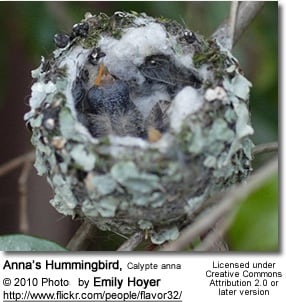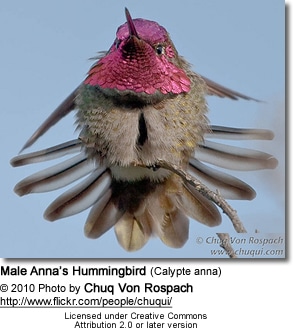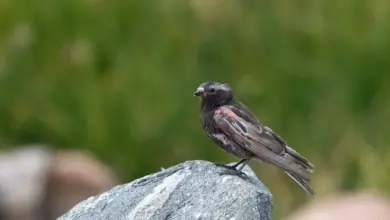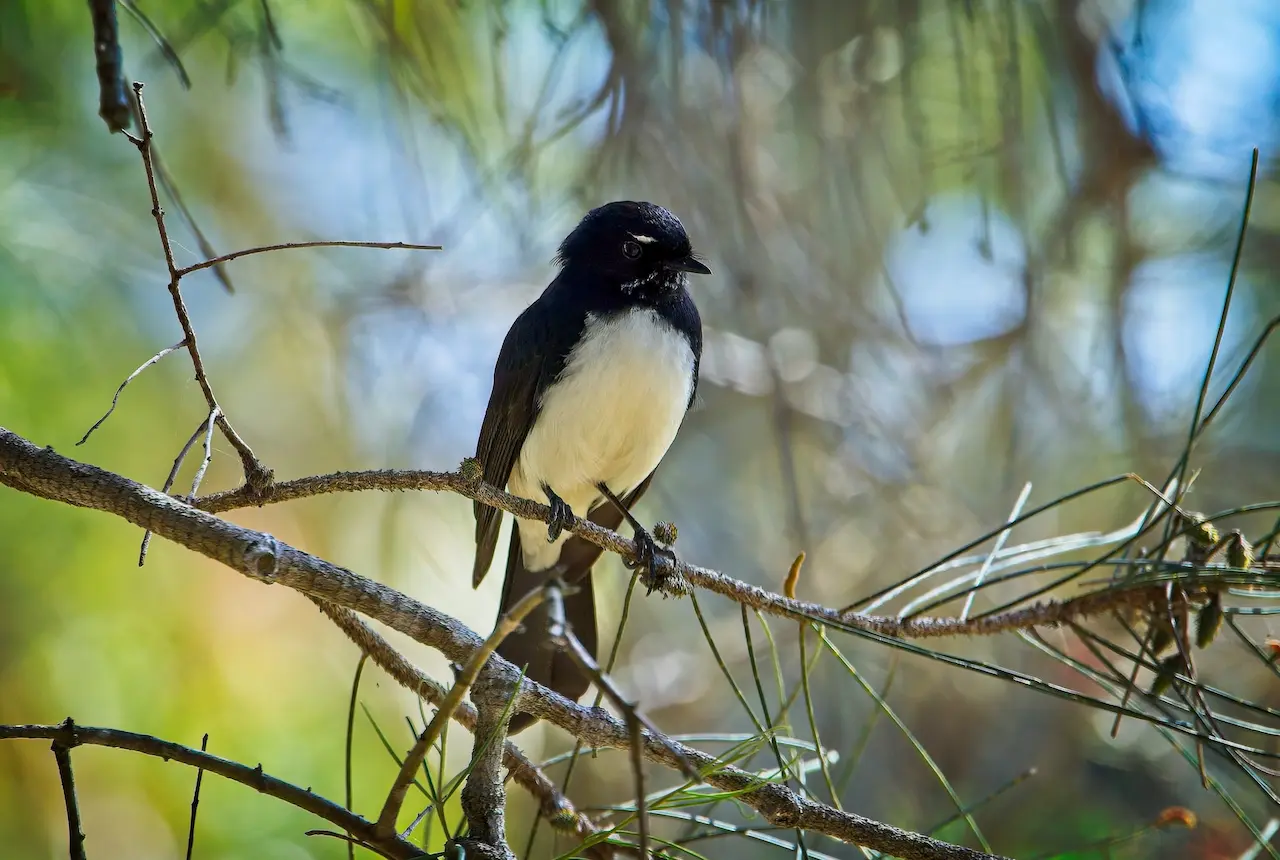Anna’s Hummingbirds: Breeding, Nesting & Hybridization
Anna’s Hummingbirds breed in open-wooded or shrubby areas and mountain meadows along the Pacific coast from British Columbia to Arizona.
Hummingbird Information
Breeding Season / Territory and Courtship:
Anna’s Hummingbirds breed in open-wooded or shrubby areas and mountain meadows along the Pacific coast from British Columbia to Arizona. The breeding season may commence as early as mid-December or as late as June. The females usually don’t start nesting until the conditions are optimal — meaning the climate is conducive for raising chicks and there is plenty of food available to raise them (flowering season).
Males and females only come together to mate and separate immediately afterwards. The female alone handles the challenging task of preparing the nest and raising the young; while the male focuses on protecting his feeding territory and pursuing other females.
The female will construct the nest before mating. Once she is in breeding condition, she will leave her breeding territory in search of a male.
When a female enters a male’s territory, the male performs a distinctive display consisting of an upwards flight to a height of 20 to 40 meters (~65 – 130 feet), followed by a steep and rapid dive towards the female. During this dive, the male reaches an amazing speed of 27 meters or 89 feet per second. At the bottom of the dive the male travels 23 meters or 75 feet per second. When the male reaches the female, he pulls up in front of her, flashes his brilliant red throat and makes a loud popping sound (thought to be made with his outer tail feathers) – then ascends to repeat the display. Note: the dive bombing is also part of his territorial behavior — except if it is a female, he will shift to a horizontal display during which he hovers and sings to the female.
Nesting / Raising the Young
The female is responsible for building the round cup-shaped nest out of green moss, small twigs and dead leaves. The diameter of the nest is about 3.8-to-5.1 cm (1.5 to 2.0 in), and it is usually situated in a protected location on a low, thin horizontal branch in a shrub, bush, tree or vines – sometimes even on wires. She lines the nest with soft plant fibers, animal hair and feather down, and strengthens the structure with spider webbing and other sticky material, giving it an elastic quality to allow it to stretch to double its size as the chicks grow and need more room.
The average clutch consists of two white eggs, which she incubates alone for about 16 – 17 days. The young are born blind, immobile and without any down.
The female alone protects and feeds the chicks with regurgitated food (mostly partially-digested insects since nectar is an insufficient source of protein for the growing chicks). The female pushes the food down the chicks’ throats with her long bill directly into their stomachs.
The chicks are brooded only the first week or two, and left alone even on cooler nights after about 12 days – probably due to the small nest size. The chicks leave the nest when they are about 18 – 26 days old.
Hybrids
They sometimes hybridize with other hummingbird species, which are then easily mistaken for a new species.
- In 2010, Mike Hamilton posted images of a bird believed to be a hybrid between an Anna’s and Rufous Hummingbird.
- A hummingbird found in Bolaños, Mexico, was described and named Floresi’s Hummingbird (Selasphorus floresii – Gould, 1861). It turned out to be a hybrid between an Anna’s Hummingbird and an Allen’s Hummingbird.
- Several birds collected in California were determined to be hybrid offspring of an Anna’s and an Allen’s Hummingbird.
- One hummingbird found in Santa Barbara, California, was named Violet-throated Hummingbird (Trochilus violajugulum – Jeffries, 1888), but was later determined to be a hybrid between an Anna’s and a Black-chinned Hummingbird.
Species Research by Sibylle Johnson
Please Note: The articles or images on this page are the sole property of the authors or photographers. Please contact them directly with respect to any copyright or licensing questions. Thank you.








